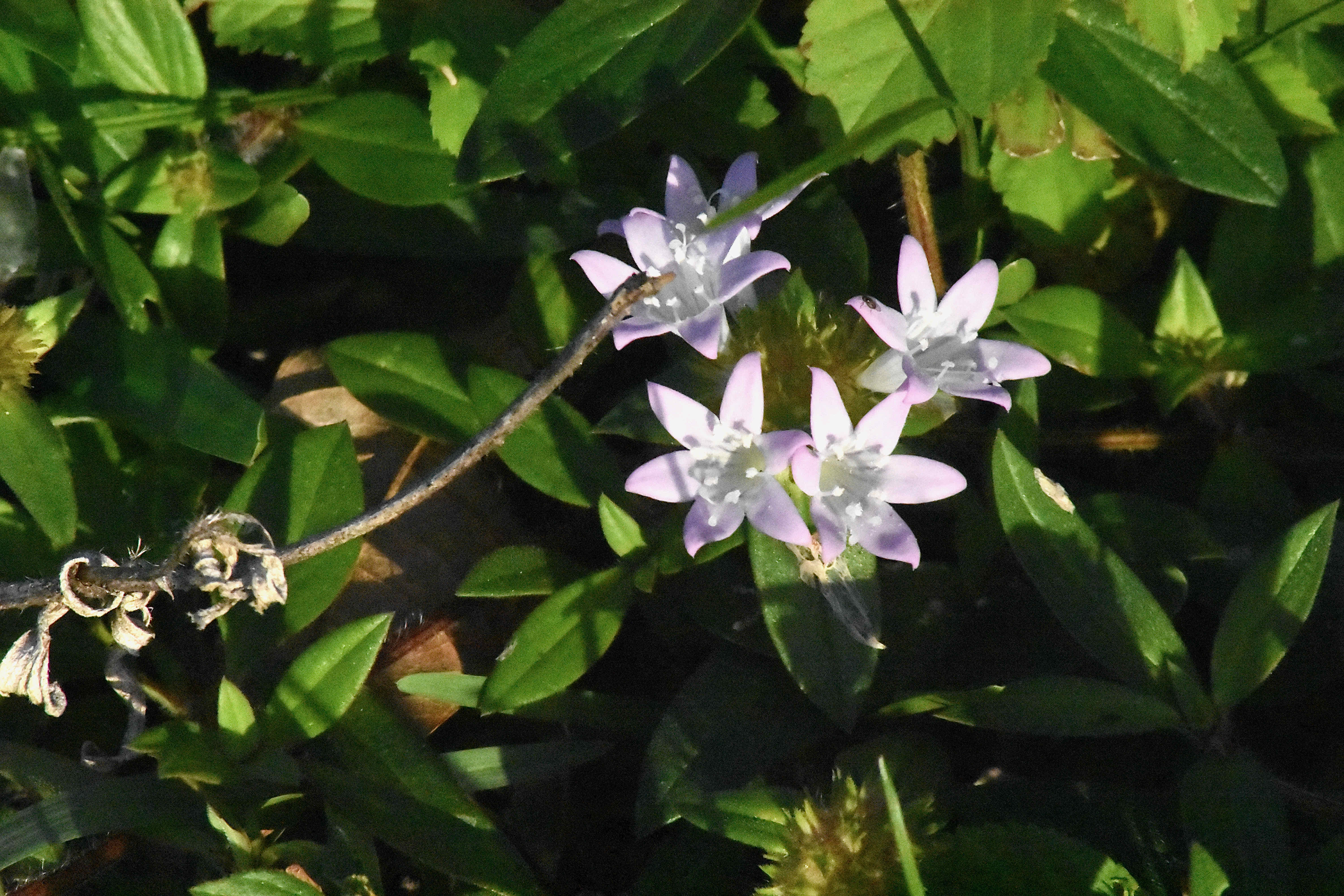
Largeflower Mexican Clover, photographed in northwestern Delray Beach, Palm Beach County, in November 2017.
If there was a hall of fame for lawn weeds, this guy, largeflower Mexican clover, Richardia grandiflora, might make it first ballot. But its talents don't end there. Largeflower Mexican clover is also a major problem in the region's natural areas.
And then there's the name that doesn't mean a thing. Largeflower Mexican clover is not Mexican and it's definitely not a clover. Not even close. Even the flowers aren't really large, though they are a bit bigger than those of its Richardia cousins, so there is that. Another name for the plant is more fitting: Florida snow, so called because when in bloom, it can turn a lawn into a bright white as if it had been hit with a fresh dusting of flakes. And prime bloom time just happens to be late fall and early winter, seasonally perfect. But whatever you call it, this plant has no one dreaming of a white Christmas.
Florida is the only state in the union where largeflower Mexican clover is established in the wild. How it got here is unknown, at least to us. It's been on the radar of the Florida Exotic Plant Pest Council since 1999; the FLEPPC declared it to be a category II invasive in 2013, meaning it has the potential to do environmental harm but has yet to do so. Its range within the state extends as far north as Alachua County and extends along the Atlantic coast from Volusia to Miami-Dade. Altogether, according to the FLEPPC, the presence of largeflower Mexican clover has been "vouchered," or scientifically verified, in 21 counties. And that was as of 2013.
The native range for largeflower Mexican clover is . . . Brazil. It's one of three Richardia species found in South Florida, all of which closely resemble the other. The others: R. scabra, rough Mexican clover, which does hail from Mexico as well as Central America, South America and the Caribbean, and R. brasiliensis, Tropical Mexican clover, another product of Brazil. Perhaps it was the Mexican native that was named first, the Brazilian natives catching the same name because of their resemblance to the Mexican plant. Who knows? A theory, at least.
Generally speaking, it's a low-lying plant, prostrate if you will. Cut it with a mower and keeps growing unhindered. In fact, mowing will help spread it by dispersing seeds. It's multibranched, and very hairy. Stems are tinged with red and become stiff as they mature. They will send out roots where they touch the ground.The leaves are eliptical in shape and sharply pointed at each end. They grow opposite each other along the stem, with smooth (entire, in botantical lingo) edges or margins. The undersides have a coarse feel.
The star-shaped flowers form in clusters at the end of branches or sometimes where leaves develop. The flowers aren't huge, perhaps a half inch to three quarters of an inch across and about the same depth. Each has six petals and stamen, are mostly pinkish white near the top, becoming more white deeper into the throat. They also can vary in shade, even becoming blue tinged.
According to the FLEPPC, largeflower Mexican clover will grow in disturbed areas, scrubs, pine rocklands, prairie, coastal stand and beach dune habitats. It can form dense patches that crowd out natives, including rare plants like largeflower rosemary and Curtiss's milkweed. It's a difficult plant for managers to control; as we noted, mowing helps spread it. It has a deep tap root, so controlled burns don't help, either.
Other common names and spellings: Florida pulsey and large flower Mexican clover. It is a member of Rubiaceae, the coffee family.



